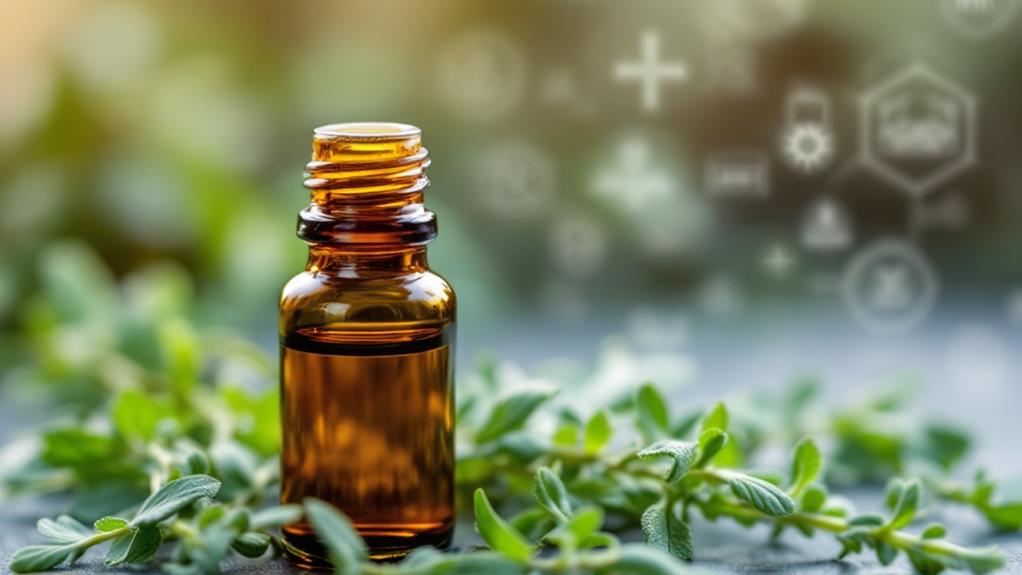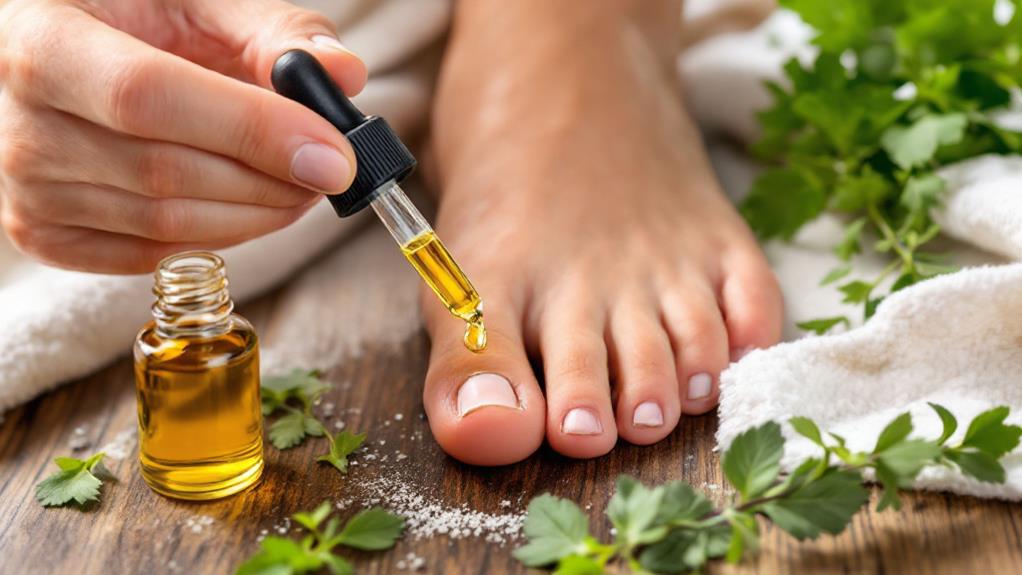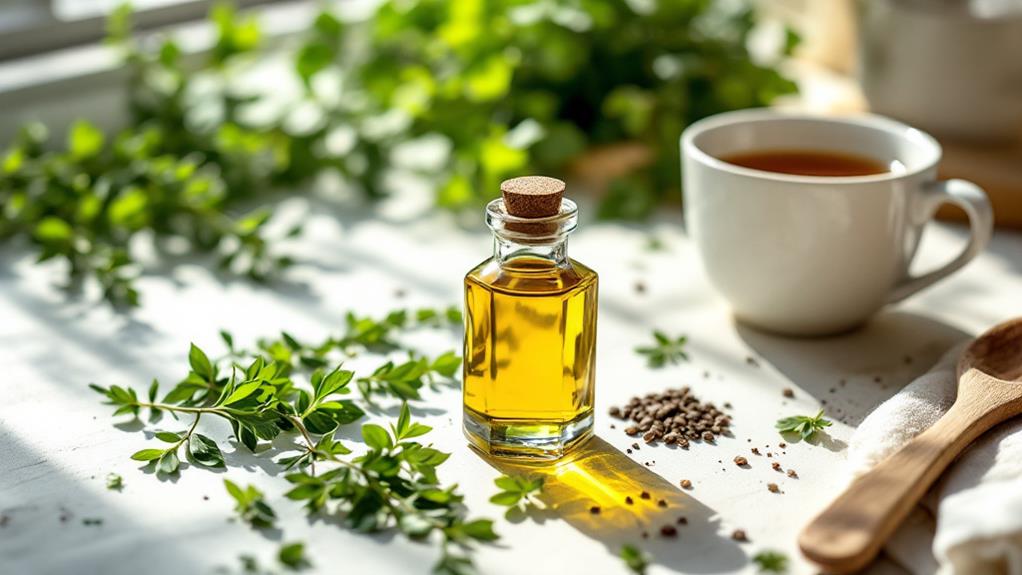How to Make Oregano Oil at Home: A DIY Guide
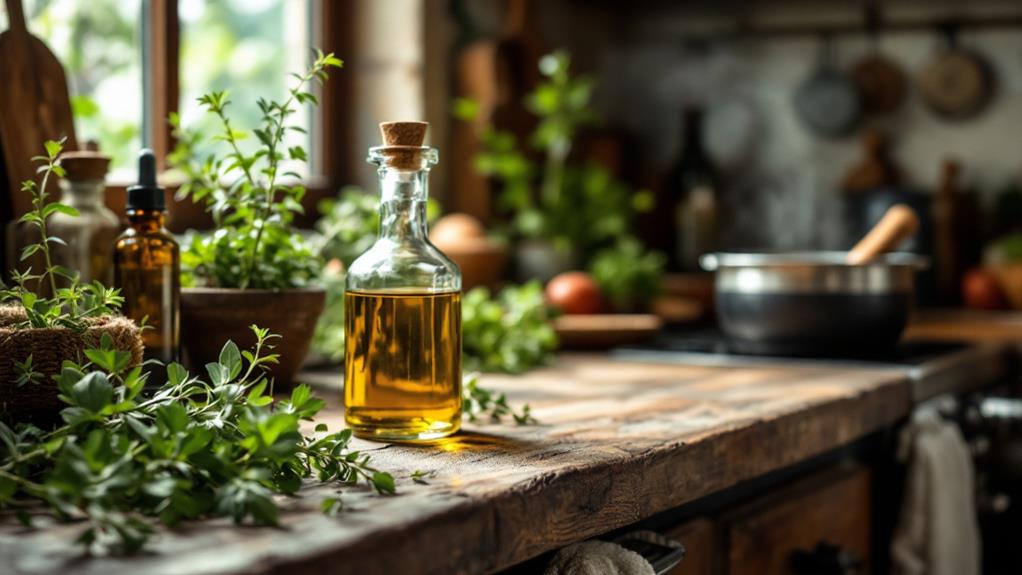
To make your own oregano oil, start by gathering 1/4 cup of dried oregano leaves and 1/2 cup of a high-quality carrier oil, like olive oil. Crush the oregano leaves using a mortar and pestle or a blender. Combine the crushed leaves with the carrier oil in a clean glass jar with a tight-fitting lid. Let the mixture infuse for 1-2 weeks in a sunny spot, shaking it every few days. Strain the oil through a fine mesh strainer and store it in a dark glass container. This simple DIY process yields potent oregano oil you can use for its myriad benefits. Uncover the complete step-by-step process and tips ahead.
Understanding Oregano Oil
Oregano oil, a powerful extract from the Origanum vulgare plant, packs a punch with its high levels of phenols like carvacrol and thymol, known for their potent antimicrobial properties. These compounds make oregano oil a popular choice for addressing a variety of health concerns. When you engage in making homemade oregano oil, you'll tap into these beneficial compounds by using traditional methods like steam distillation or cold pressing. These techniques guarantee that the vital nutrients, such as omega-3 fatty acids, iron, manganese, and vitamin K, are retained in the oil, providing an enhancement to your overall wellness.
Creating DIY oregano oil isn't just about capturing its medicinal properties; it's about embracing its full range of uses. The oil's distinctive spicy, herbaceous aroma isn't only a treat for your senses but also an indication of its quality and effectiveness. By understanding oregano oil's properties and the role carvacrol and thymol play, you'll appreciate why it's been historically valued for treating respiratory issues, digestive disorders, and infections. So, when you initiate crafting your homemade oregano oil, you're not just making an oil; you're harnessing nature's beneficial compounds.
Benefits of Oregano Oil
You might be surprised by how adaptable oregano oil is regarding health benefits. This DIY homemade oil is packed with compounds like carvacrol and thymol, which provide powerful antimicrobial properties. By using fresh oregano leaves, you can create an oil that effectively combats bacteria, viruses, and fungi, improving your general health.
One of the standout benefits of oregano oil is its support for digestive health. It helps relieve upset stomachs, fights bacterial overgrowth, and stimulates bile production, making it a natural remedy for different digestive issues. If you've ever struggled with joint pain or muscle soreness, the anti-inflammatory properties in oregano oil can help reduce swelling and provide relief, promoting joint health.
Moreover, this oil is a strong antioxidant, aiding in neutralizing free radicals and potentially improving your immune function. Regularly incorporating oregano oil into your diet not only improves the flavor of your dishes but also contributes to your daily nutrient intake. With its multitude of health benefits, making your own oregano oil at home using fresh oregano leaves is both a practical and health-conscious choice that you won't regret.
Essential Ingredients
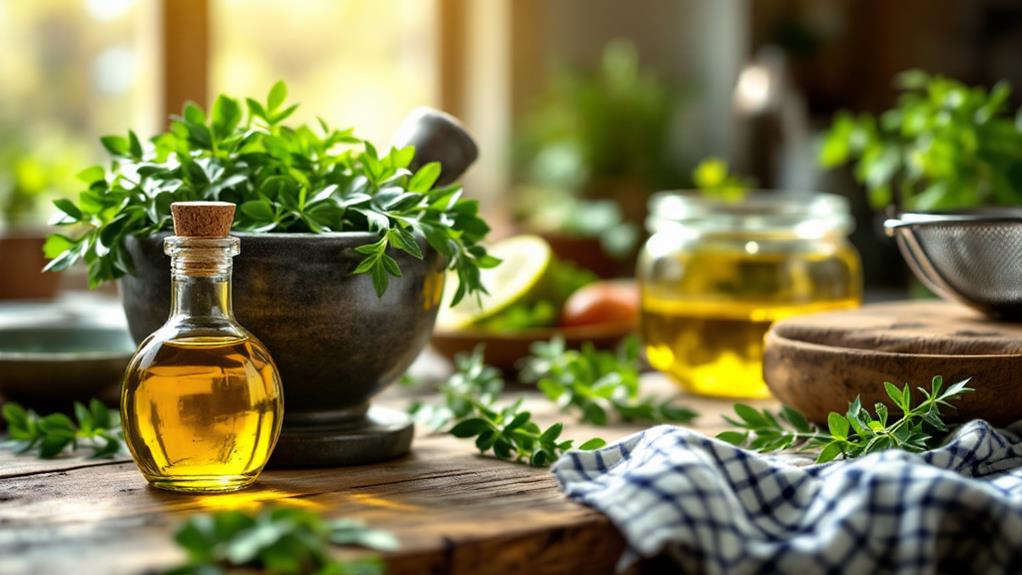
To create your homemade oregano oil, you'll need a few essential ingredients to guarantee its potency and effectiveness. Start with oregano leaves as your primary ingredient. You can use either fresh or dried oregano, but dried oregano is often preferred for its concentrated potency. You'll need about 1/4 cup of dried oregano leaves.
Next, choose a high-quality carrier oil for the infusion process. Extra-virgin olive oil is an excellent choice, known for its rich texture and ability to extract the beneficial compounds from the oregano leaves. Use a ratio of 1/2 cup of carrier oil to 1/4 cup of oregano leaves for best results.
It's significant to opt for organic oregano to guarantee your homemade oil is free from pesticides and impurities. If you're using fresh oregano leaves, make sure to wash them thoroughly to remove any dirt or insects.
Consider adding natural preservatives to extend the shelf life of your oregano oil. Optional ingredients like lemon or grapefruit oil can be included to improve longevity and aroma.
- 1/4 cup dried oregano leaves
- 1/2 cup high-quality carrier oil (e.g., olive oil)
- Organic oregano
- Optional: lemon or grapefruit oil for natural preservatives
Tools and Materials
When starting on your DIY oregano oil project, gathering the right tools and materials is essential for a smooth process. Begin with fresh oregano leaves or dried oregano, as these are your primary ingredients. Opt for organic to guarantee a high concentration of beneficial compounds. You'll also need a carrier oil, such as extra-virgin olive oil, which is excellent for diluting the oregano's potency, making it safe for use while enhancing its benefits.
Equip yourself with a clean glass jar, crucial for the infusion process. This jar should have a tight-fitting lid to prevent contamination. To crush the oregano leaves effectively, a mortar and pestle or a blender will come in handy. This step is vital for releasing the plant's natural oils. Once your infusion is ready, a fine mesh strainer will help separate the oil from the plant material.
For storage, dark glass bottles are indispensable. They protect the oregano oil from light exposure, preserving its potency and extending shelf life. Regardless of whether you choose the heating or cold-pressed method, guaranteeing you have these materials at hand will make your oregano oil-making experience seamless.
Step-by-Step Preparation
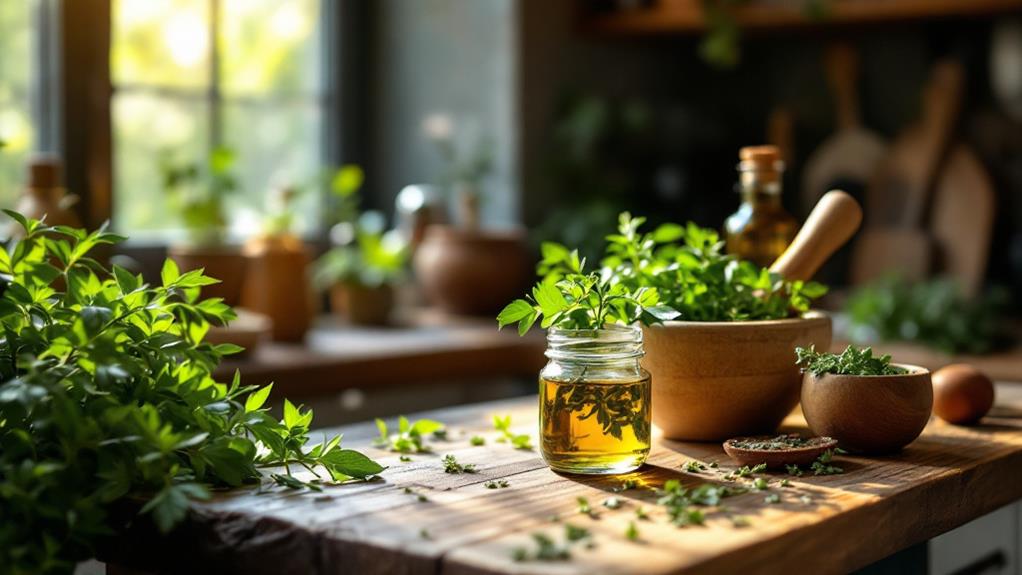
Crafting your oregano oil begins with choosing the finest ingredients. Opt for lively, fresh oregano leaves or dried oregano, guaranteeing you maintain a 1:2 ratio of oregano to a carrier oil like olive oil for peak potency. To start making your own DIY herbal oil mixture, follow these steps:
- Harvest or buy: Use fresh oregano leaves or dried oregano.
- Wash and crush: Rinse fresh leaves thoroughly, then crush them with a mortar and pestle or blender to optimize the surface area for better oil infusion.
- Combine ingredients: Mix the crushed oregano with the carrier oil in a glass jar, assuring the leaves are fully submerged.
- Infuse: Place the jar in a sunny window for 1-2 weeks, shaking it every few days to boost the oil infusion process.
After the infusion period, strain the oil through cheesecloth or a fine mesh strainer into a clean, dark glass container. This step guarantees you separate the plant material from the oil, preserving the potent antimicrobial properties of your oregano oil. Store it in a cool, dark place or refrigerate for peak freshness. Label the container with the date of preparation, ensuring you have a reliable natural remedy at your disposal.
Infusion and Straining
Infusing and straining oregano oil is a simple process that requires just a few steps to guarantee the best results. Start by combining 1/4 cup of dried oregano leaves with 1/2 cup of a carrier oil, like olive oil, in a small saucepan. Make certain the oregano leaves are fully submerged to guarantee peak extraction. Next, gently heat the mixture over low heat for about 30 minutes. Stir occasionally to improve the infusion process, but be careful not to burn the leaves.
Once the heating is complete, it's time to strain the oil. Use a fine mesh strainer or cheesecloth to separate the infused oil from the oregano leaves. This will ensure you have a clear final product. Let the strained oil cool completely before transferring it to a clean, dark glass jar. This step is vital to prevent condensation, which can lead to spoilage.
Storage Tips

How can you guarantee your homemade oregano oil stays potent and safe for use over time? Proper storage is key to maintaining its beneficial properties. Here are some vital storage tips to help you make the most out of your oregano oil:
- Use dark glass bottles: Store homemade oregano oil in dark glass bottles to protect potency. Light exposure can lead to the degradation of the oil's beneficial compounds.
- Choose a cool, dry place: Heat and humidity can spoil the oil, so it's important to keep it in a cool, dry place. This helps preserve its quality and extends its shelf life.
- Label and monitor freshness: Always label your bottles with the preparation date. Homemade oregano oil typically lasts about 3 months at room temperature and up to a year if refrigerated.
- Check for degradation signs: Regularly inspect the oil for any changes in color or scent. This helps confirm it's still safe and effective for use.
Don't forget to dispose of any leftover plant material properly to prevent contamination. By following these storage tips, you can enjoy your homemade oregano oil's full benefits while maintaining safety and effectiveness over time.
Safety Precautions
When using oregano oil, it's essential to prioritize safety to prevent any adverse reactions. Oregano oil is potent, and to guarantee it's safe, always dilute it with carrier oils before topical application. This dilution prevents skin irritation and burning sensations. The antimicrobial properties of oregano make it effective, but also powerful, so you need to handle it with care.
Before you apply oregano oil, conduct a patch test. This simple step helps identify any allergic reactions and prevent potential side effects. Just apply a small amount of the diluted oil to a small skin area and wait 24 hours to check for any adverse reactions.
To guarantee oregano oil remains effective, store oregano oil in dark glass bottles, keeping them in a cool, dry place. This storage method prevents degradation from light and heat.
Don't forget to consult a healthcare professional before using oregano oil, especially if you're pregnant, nursing, or on medications. This consultation is significant to avoid potential interactions. Also, confirm proper ventilation when using oregano oil, as strong vapors can cause respiratory discomfort. If you notice any negative reactions, stop using oregano immediately.


